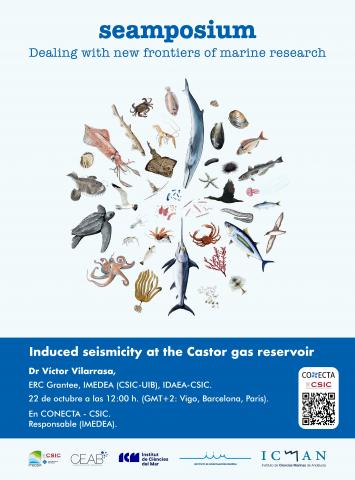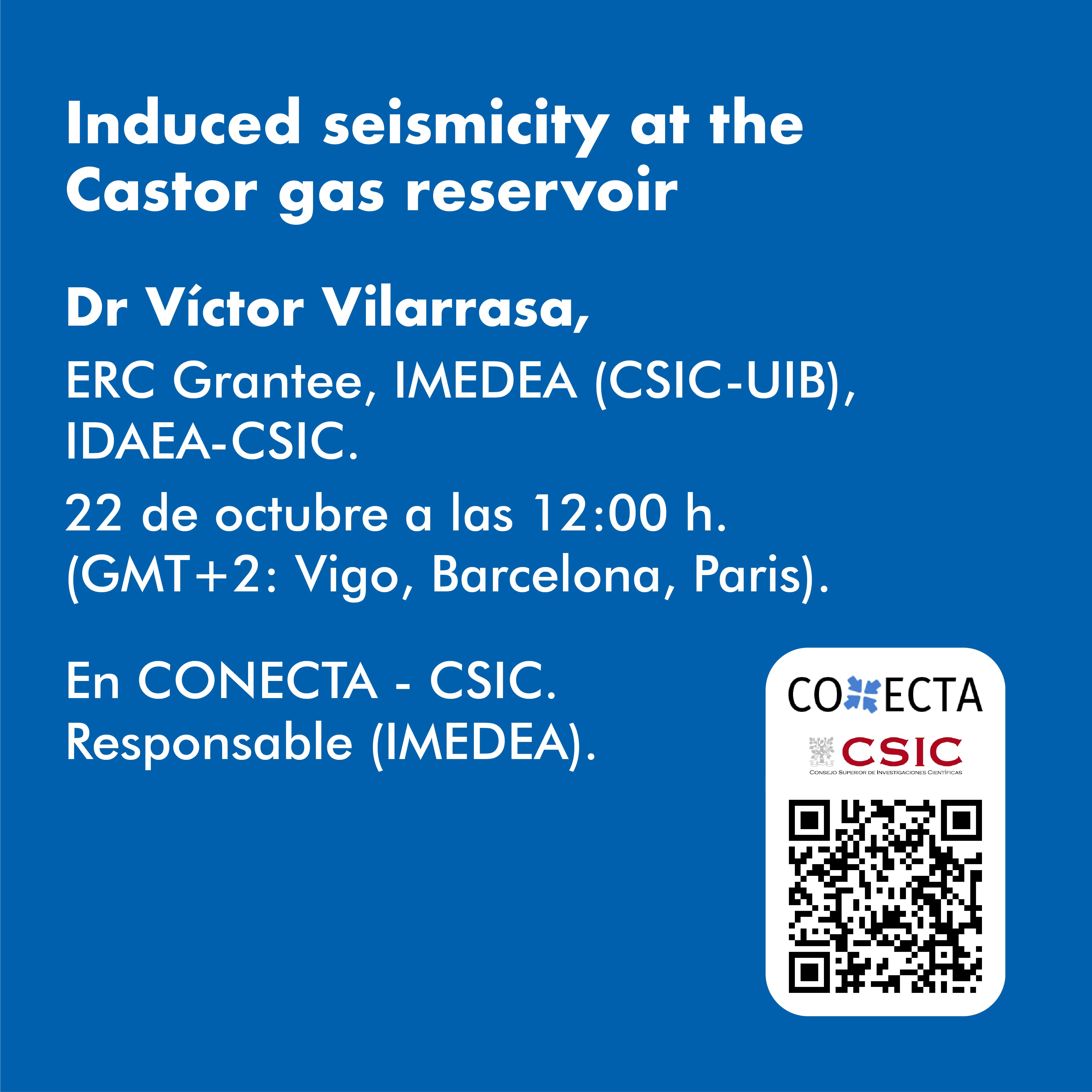
On the occasion of the Decade of Marine Sciences promoted by the UN (# ODS14) that aims to generate a common framework that ensures that marine sciences fully support actions to sustainably manage the world's oceans and seas, and thus achieve the objectives of the 2030 Agenda for Sustainable Development, the CSIC marine centers: IMEDEA, CEAB, ICM, ICMAN and the IIM have organized a joint cycle of conferences entitled "Seamposium: Addressing the new frontiers of marine research" through which creates a discussion forum around a monthly seminar conducted by a recognized expert in different marine topics.
 Title: Induced seismicity at the Castor gas reservoir
Title: Induced seismicity at the Castor gas reservoir
Speaker: Víctor Vilarrasa
Date: 22th October 2021
Time: 12.00 pm. (GMT+2: Vigo, Barcelona, Paris)
Venue: Online Conference Room (CONECTAHA)
Abstract:
The Underground Gas Storage (UGS) project of Castor, Spain, was a strategic project to have a store capacity equivalent to the gas demand of 50 days in Spain. The gas was stored in an offshore formation in which heavy oil was produced in the 1970s and 80s. However, the project was cancelled before entering into operation because a sequence of felt earthquakes was induced as a result of the cushion gas injection. The project cancellation implied an investment compensation to the operating company that may cost up to 4.73 billion euros to Spanish citizens. A striking feature of the induced seismicity was the high magnitude of the earthquakes, containing the three largest earthquakes (M4.08, M4.01 and M3.97) ever induced by any of the more than 640 UGS facilities all around the world. Another striking feature was the delay between the stop of gas injection and the occurrence of the earthquakes. Gas was injected for 15 days and the largest earthquakes were induced 20 days after the stop of injection. Last but not least, the hypocenters of these earthquakes were located between 4 to 10 km, much deeper than the injection depth, placed at 1.7 km. Though an interdisciplinary research combining hydrogeology, geomechanics and seismology, we have proposed a plausible combination of triggering mechanisms that explains these features of the induced seismicity. The onset of seismicity was induced by gas injection, which reactivated through pore pressure buildup and buoyancy the critically stressed Amposta fault, a mature fault bounding the storage formation. The Amposta fault crept, accumulating aseismic slip, even after the stop of injection because of the permanent effect of buoyancy caused by the injected gas. This progressive accumulation of slip perturbed the stress around it and eventually reactivated a critically stressed unmapped deep fault. Once this deep fault was reactivated, the sequence of earthquakes was induced by shear slip stress transfer, with transient deformation-induced pore pressure changes likely controlling the delay between earthquakes. An analysis of fault stability prior to gas injection would have identified the high risk of inducing seismicity at Castor.

